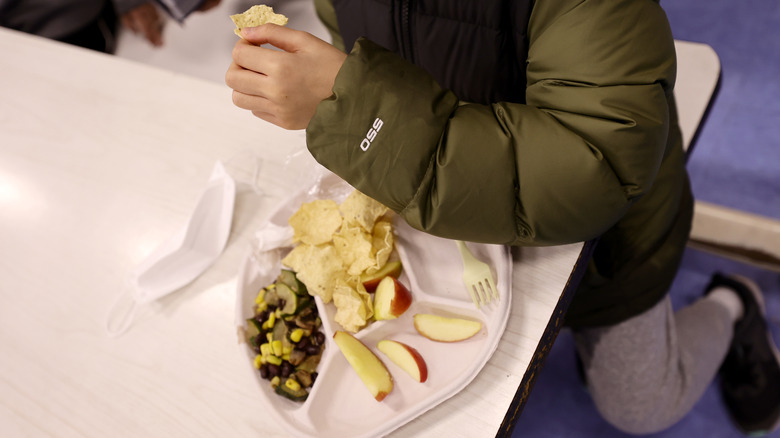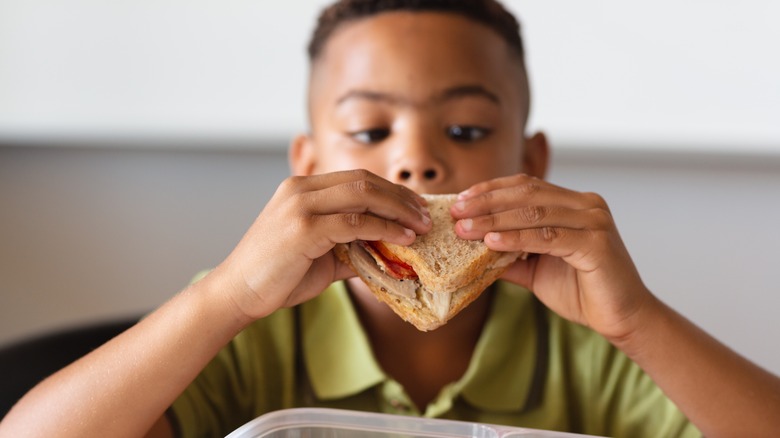How The US School Lunch Program Took Over 40 Years To Become Official
America's National School Lunch program serves millions of children each year, according to the U.S. Department of Agriculture Food and Nutrition Service, by providing free and affordable meals at schools and residential facilities. But the road to establishing the federally funded initiative has been long. According to an article in Mental Floss, before lunches were offered at school, students would head home to eat. As more parents began working outside of the home, however, kids were left to their own devices — which were not always the healthiest of lunchtime meal choices. More fortunate students could buy snacks from street carts, but children without loose change had to get creative if they wanted food.
In city areas, volunteer organizations came to the rescue, serving soup and milk to students; by 1912, three-cent meals of lentils and bread were offered in more than 40 cities across the United States by groups like the New York School Lunch Committee. According to PBS, in some schools, students in home economics classes would serve lunch, but schools in rural areas often didn't have the resources or equipment needed to result in meaningful food prep. In fact, many school boards across the country were reluctant to take on added responsibilities without backing from the government.
Federal government standards for school lunches
The federal government was slow to step in, but in 1935, it began to distribute farming and agricultural surpluses to schools, helping to provide meals to students (per American Action Forum). It wasn't until 1946 that President Harry S. Truman finally made school lunch programs official by signing the National School Lunch Act (via PBS). Soon, private companies entered the scene in the 1950s, and school lunches grew into a profitable business opportunity, as companies contracted with school districts to provide lunch options and lunchboxes inspired by TV shows became the best way to bring your lunch to school (per Mental Floss). In the 1970s, schools began adding fries, hamburgers, and dessert to lunch menus, and guidelines set forth by the USDA only required a minimum of nutritional value. Since then, advocates have sought to introduce and maintain nutritional standards in school cafeterias, while the National School Lunch program, according to the USDA, has become America's second most accessed food program, operating in nearly 100,000 primary and secondary schools and residential centers for children.
While the American lunch program is far from perfect, students can demonstrate eligibility for various meal programs through financial need or categorical qualification, and in some districts, the Congressional Research Service notes breakfast and lunches are offered entirely for free. It may have taken a while to get going, but now nearly 30 million children rely on the National School Lunch program.

